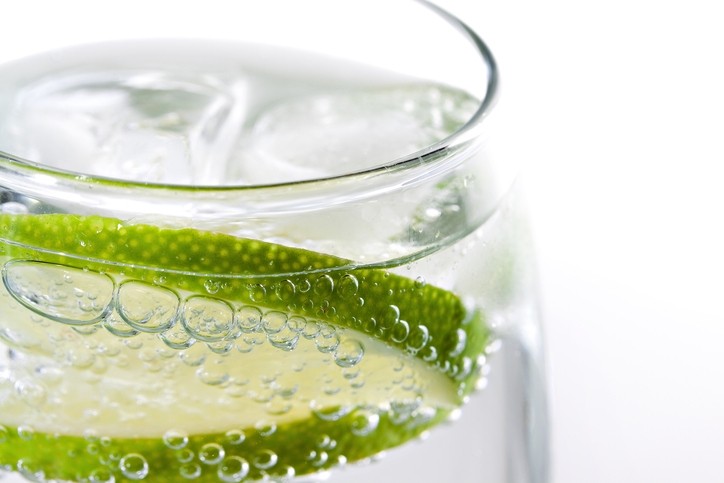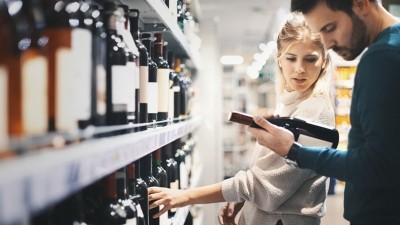RTD alcohol category to hit $40bn by 2027

The data comes from IWSR RTDs Strategic Study 2023, which analyses trends in 10 markets – Australia, Brazil, Canada, China, Germany, Japan, Mexico, South Africa, the UK and the US. These together account for 83% of global RTD consumption with a total value of $33.9bn in 2022.
The RTD category has been booming: but the category is showing signs of maturity: growth expectations across these markets have now halved over the past year to a forecast volume CAGR of 2% between 2022 and 2027.
However, this picture is very much skewed by declines of hard seltzers in the US: excluding hard seltzers, the RTD volumes can be expected to grow at a CAGR of 5% over this period.
Over the same timescale, cocktails/long drinks will see their share of RTD volumes across the key markets grow by 4 percentage points, to command a quarter volume share of the RTD category by 2027, while that of hard seltzers will shrink by 11 percentage points.
“Growth is slowing in an increasingly mature global RTD category, but opportunities persist in the cocktails/long drinks space and for premium-plus products that prioritise consumer-forward cues such as RTD base, ABV and flavour,” remarks Susie Goldspink, Head of RTD Insights, IWSR.
'The effectiveness of new launches has improved'
As the category matures, new product development is changing, with the pace of innovation slowing from its 2021 peak (In 2021 more than 3,000 new RTD products were launched, but in the first half of 2023, that slowed to just over 1,000).
Top innovations are ones that look to premium price points: whether that be from drawing on popular spirits categories or turning to premium or functional ingredients.
“The premiumisation trend is moving in a variety of directions, from premium formats to a shift in ingredients and added functionality – all aspects that offer a point of differentiation to consumers,” says Goldspink. “Although the pace of innovation has slowed, the effectiveness of new launches has improved, as producers are more strategic and targeted in their product launches.”
Despite the impact of the cost-of-living crisis on consumer incomes, seven out of the 10 markets analysed registered double-digit volume growth for premium-plus RTDs in 2022, suggesting that there is still plenty of headway for growth for higher-priced products.
Ready-to-serve
Ready-to-serve products (those that are 'ready-to-serve' into a glass, such as in bars or restaurants) are fuelling the premiumisation of RTDs, although launches have tailed off after a post-pandemic peak. The concept is most popular in the US. The segment has a range of formats, and offers a practical cocktail solution to on-trade venues that lack the time and skills to create their own mixology offer.
“Ready-to-serve product launches are typically cocktails with higher ABVs,” explains Goldspink. “Brands are often available in multiple sizes, giving consumers a choice between a single serve or a bottle to take to a party, cutting into wine gift occasions.”
Consumer trends
Consumers are making RTD alcohol choices by considering factors such as alcohol strength, flavor, alcohol base, type of drink (ie cocktail/longdrink) and price.
Only 29% said the brand was important to their choice of RTD.
"In this respect, RTDs could be moving in the same direction as craft beer: as the market becomes brand-saturated, consumers feel overwhelmed and base their purchasing decisions on other factors, such as flavour or ABV," says IWSR.
"However, recent co-brand launches from marquee names could counteract this decline, offering the reassurance of a trusted name and restoring the importance of branding in RTDs."
Recruitment of new entrants into the RTD category is slowing, says IWSR, but consumers are exploring more sub-categories.
"In 2021, 24% of RTD consumers were new to the category (defined as having entered it in the past two years); by 2023, that figure had fallen to 13%, suggesting that the category is reaching maturity."
Higher ABV products
As the shift from lighter to fuller flavours continues, brand owners are increasingly focusing on products with higher ABVs, with IWSR research suggesting that 32% of RTD consumers consider alcoholic strength when selecting a product.
“Historically, the trend has been for RTDs to sit between 4% and 5% ABV,” says Goldspink. “Now, a number of brands are offering products north of 8% ABV, with several players actively relaunching existing products at new, higher strengths.”
Spirit-based RTDs
Another aspect to premiumization is the use of a spirit base. Up to 25% of RTD drinkers say they are willing to pay more for a spirit-based RTD over a malt-based one (in fact, alcohol base is now the joint-second most important factor for consumers when they make their RTD choices).
Spirit-based RTD volumes rose 5% in 2022: compared to declines of -4% for malt-based RTDs and 3% for wine-based RTDs.
"Vodka remains the most popular RTD spirit base, but gin’s decline in popularity opens the way for tequila to move ahead of it in the rankings," notes IWSR.
The global picture
The US is the largest RTD market, but Japan is expected to add the most volume going forward as the US sees its growth rates drop to +1% volume CAGR, 2022-2027.
Despite this slowdown in the US, both the US and Japan will remain the largest RTD volume markets over the next 5 years, led by the growth of FABs in Japan, and cocktails/long drinks, FABs and hard tea in the US.
China is also expected to become a more significant market, growing by a volume CAGR of +6%, 2022-2027, driven particularly by the FAB sub-category.
The global RTD category remains highly fragmented, with individual product types tending to dominate individual countries: hard seltzers in the US, cocktails/long drinks in Australia, Mexico and Germany, and FABs in Brazil, Japan, China and South Africa.
“Individual markets have local tastes and dynamics, with different categories, flavours and bases trending in different places,” says Goldspink. “This means that a one-size-fits-all approach will not be effective – instead, brand owners need to be agile and tailor their product mix to localised developments.”









